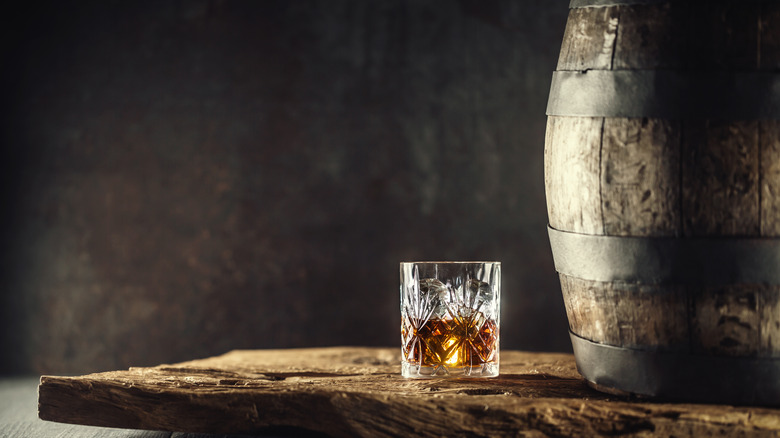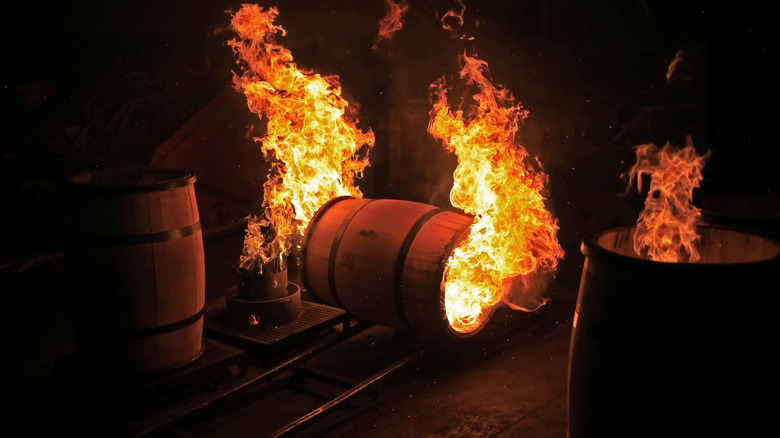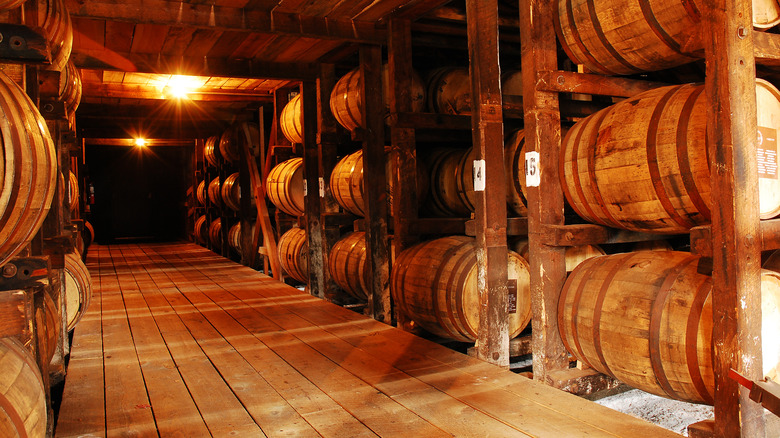The US Law That Restricts The Use Of Bourbon Barrels
CORRECTION 1/31/23: A previous version of this article stated bourbon cannot be bottled at higher than 80 proof; 80 proof is the lower limit bourbon can be bottled at.
The famous axiom, "all bourbon is whiskey, but not all whiskey is bourbon," is a useful and quick explanation for this unique American spirit. There are five rules that make bourbon what it is, and they are codified by the United States Alcohol Tax and Trade Bureau, according to CNBC. The first is that bourbon must be made in the U.S.; and though it doesn't have to be made in Kentucky, most of it is. Secondly, the mash, or grain mixture distilled to make the bourbon, must be at least 51% corn. The next two rules say that 125 proof (62.5% alcohol) is the upper limit at which bourbon can be barreled, and 80 proof (40% alcohol) is the lower limit at which it can be bottled. And nothing but water can be added to bourbon to dilute its potency. Finally, bourbon must be aged in charred, new oak containers, and its color can only come from aging in this way — no artificial colors or flavors are allowed.
It's, of course, that last rule that makes a real difference in bourbon's flavors and gives it the character it has.
Charred Oak is Law
Most whiskies are distilled in oak barrels. But while whiskey can be put in any barrel or receptacle, used or new, bourbon doesn't have that option. Most bourbon producers prefer a new, charred American white oak barrel. VinePair reports that while some believe the barrel must be American white oak, the legal requirements only call for charred new oak and make no distinction about what kind of oak to use or even whether it is an actual barrel.
Bourbon's distinguishing characteristic flavors are sweeter, with more caramel and vanilla notes, than most whiskeys. While some of this is due to its high corn content in the mash bill, the charred new American oak is also responsible for some of that sweetness, says Oak & Eden. The spirit flows in and out of the charred surface of the wood, giving it both color and its distinct taste.
In Demand and Growing
The tradition of new oak barrels probably dates back to when bourbon was first being produced in Kentucky and shipped to other parts of the country. Since oak trees were abundant at the bourbon's source, there was no need to ship the containers back as it was cheaper to just make new ones, according to The Whiskey Wash. These days, however, bourbon producers are so concerned with the future of American white oak barrels, that Food & Wine reports on "the White Oak Initiative," a group rallying to preserve white oak tree growth. American white oak trees are currently growing on over 100 million acres of land, but even that isn't enough to keep up with the demand for the beverage.
Bourbon is America's only native spirit, and its deep, rich, and subtle flavors continue to be a favorite not only in the U.S. but worldwide. And the reason why that's so has a lot to do with the barrels in which it is made.


